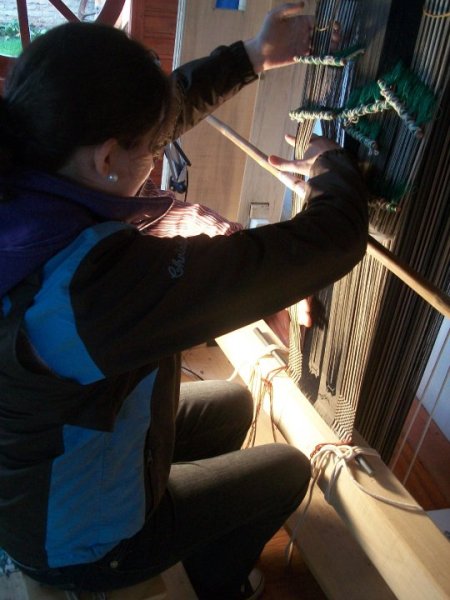Doñihue means “the place between eyebrows” in Mapudungun, the language of the indigenous Mapuche (I’m not sure why it means that, but it does). Doñihue is famous for its chamantos, its aguardiente, and its agricultural economy.
So how did we Tuftsters get an authentic experience? By listening to people talk about their jobs, visiting businesses and farms, and riding horses, of course. (\tourism).
The Authentic Experience
We checked out some of the typical jobs in the area, like harvesting oysters, making aguardiente, weaving chamantos (which are a typical Chilean poncho), baking pan amasado (“kneaded bread”), and farming aloe and eucalyptus. We actually rode up to the aloe and eucalyptus farms on horses. Don’t worry; we looked totally natural.
 Christy is pictured above, exhibiting her impressive chamanto-weaving skills. It takes six months to make each chamanto, partially because each one must be completed by only one person. Normally the women that make them do all of their work from their houses. I guess we just lost Christy. Woops.
Christy is pictured above, exhibiting her impressive chamanto-weaving skills. It takes six months to make each chamanto, partially because each one must be completed by only one person. Normally the women that make them do all of their work from their houses. I guess we just lost Christy. Woops.
We also passed through Coínco, a neighboring town where the housing requirements establish that houses be made in the Spanish colonial style. Unfortunately, adobe frequently does not hold up well in earthquakes (click on the link to see damage in Coínco after the earthquake of 2010).
With that, I will leave you off with some words of wisdom that I found to be most valuable on this trip: “In Chile, there are three things you take with your hand: your empanada, your guitar, and your woman.”
Feel free to interpret that bit of advice. It left me rather speechless at the time.
